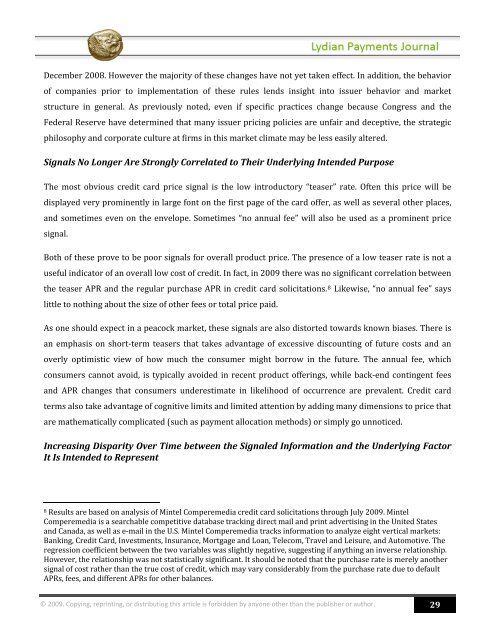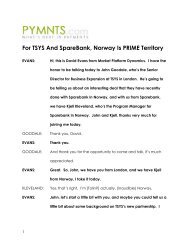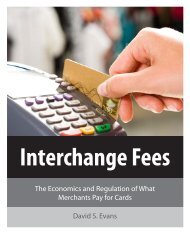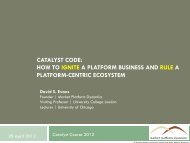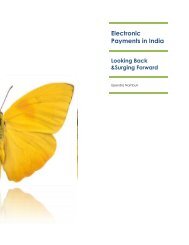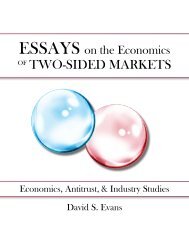Lydian Payments Journal - PYMNTS.com
Lydian Payments Journal - PYMNTS.com
Lydian Payments Journal - PYMNTS.com
You also want an ePaper? Increase the reach of your titles
YUMPU automatically turns print PDFs into web optimized ePapers that Google loves.
December 2008. However the majority of these changes have not yet taken effect. In addition, the behavior<br />
of <strong>com</strong>panies prior to implementation of these rules lends insight into issuer behavior and market<br />
structure in general. As previously noted, even if specific practices change because Congress and the<br />
Federal Reserve have determined that many issuer pricing policies are unfair and deceptive, the strategic<br />
philosophy and corporate culture at firms in this market climate may be less easily altered.<br />
Signals No Longer Are Strongly Correlated to Their Underlying Intended Purpose<br />
The most obvious credit card price signal is the low introductory “teaser” rate. Often this price will be<br />
displayed very prominently in large font on the first page of the card offer, as well as several other places,<br />
and sometimes even on the envelope. Sometimes “no annual fee” will also be used as a prominent price<br />
signal.<br />
Both of these prove to be poor signals for overall product price. The presence of a low teaser rate is not a<br />
useful indicator of an overall low cost of credit. In fact, in 2009 there was no significant correlation between<br />
the teaser APR and the regular purchase APR in credit card solicitations. 8 Likewise, “no annual fee” says<br />
little to nothing about the size of other fees or total price paid.<br />
As one should expect in a peacock market, these signals are also distorted towards known biases. There is<br />
an emphasis on short‐term teasers that takes advantage of excessive discounting of future costs and an<br />
overly optimistic view of how much the consumer might borrow in the future. The annual fee, which<br />
consumers cannot avoid, is typically avoided in recent product offerings, while back‐end contingent fees<br />
and APR changes that consumers underestimate in likelihood of occurrence are prevalent. Credit card<br />
terms also take advantage of cognitive limits and limited attention by adding many dimensions to price that<br />
are mathematically <strong>com</strong>plicated (such as payment allocation methods) or simply go unnoticed.<br />
Increasing Disparity Over Time between the Signaled Information and the Underlying Factor<br />
It Is Intended to Represent<br />
8 Results are based on analysis of Mintel Comperemedia credit card solicitations through July 2009. Mintel<br />
Comperemedia is a searchable <strong>com</strong>petitive database tracking direct mail and print advertising in the United States<br />
and Canada, as well as e‐mail in the U.S. Mintel Comperemedia tracks information to analyze eight vertical markets:<br />
Banking, Credit Card, Investments, Insurance, Mortgage and Loan, Tele<strong>com</strong>, Travel and Leisure, and Automotive. The<br />
regression coefficient between the two variables was slightly negative, suggesting if anything an inverse relationship.<br />
However, the relationship was not statistically significant. It should be noted that the purchase rate is merely another<br />
signal of cost rather than the true cost of credit, which may vary considerably from the purchase rate due to default<br />
APRs, fees, and different APRs for other balances.<br />
© 2009. Copying, reprinting, or distributing this article is forbidden by anyone other than the publisher or author. 29


